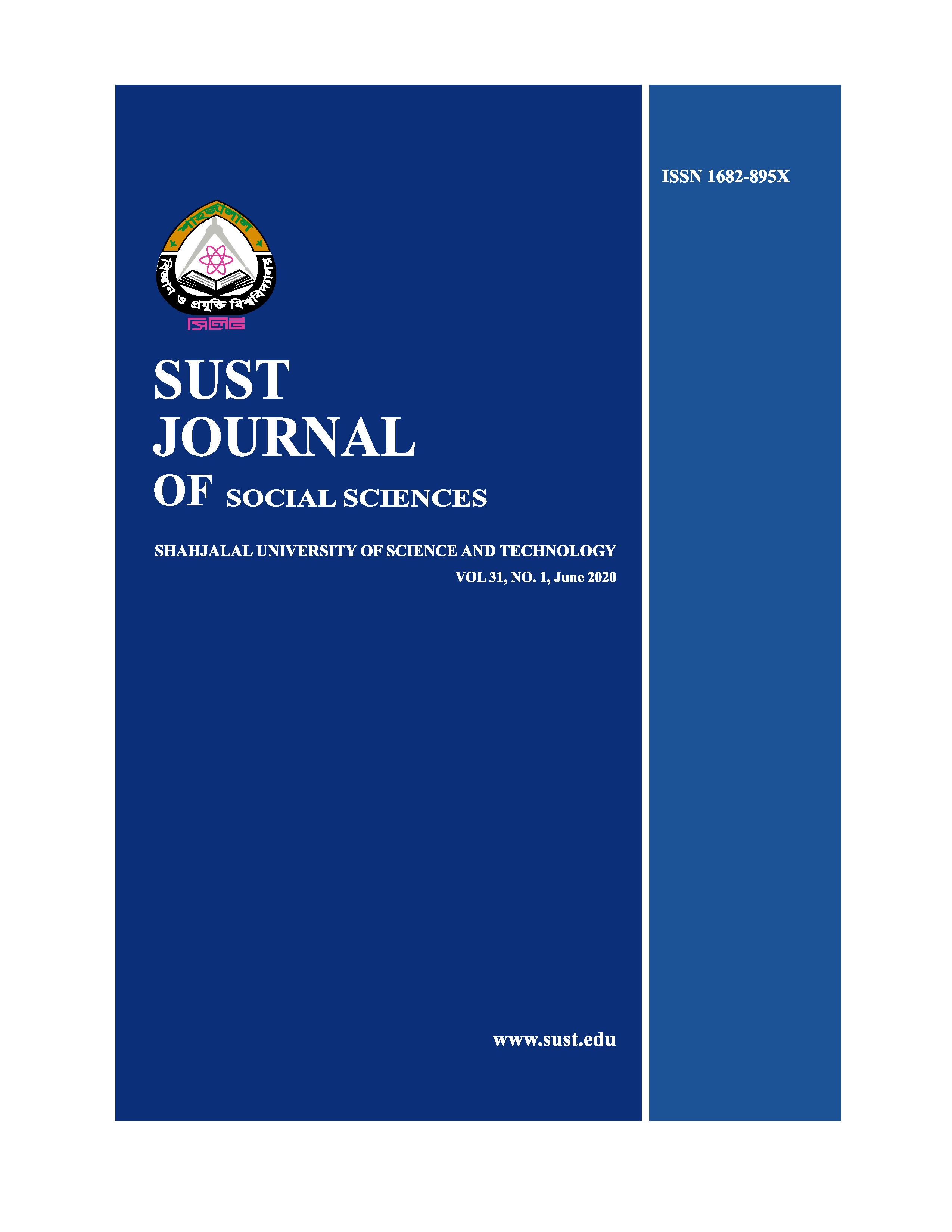- All Volumes
- Vol. 34, No. 1, 2023 (5 papers)
- Volume 33, Issue 1, 2022 (3 papers)
- Vol 33 Issue 2, 2022 (4 papers)
- Vol 32, No 1, 2021 (5 papers)
- Vol 32, No 2, 2021 (Special Issue on Bangladesh Development Perspectives : Issues of Economic Justic, 2021 (12 papers)
- Volume 32, Issue 2, 2021 (12 papers)
- VOL 31, No. 1, 2020 (3 papers)
- Vol 31, No.2, 2020 (5 papers)
- Vol 30, No 2, 2019 (5 papers)
Corruption and Economic Growth: A Random Effect Approach
Corresponding Author : Md. Gias Uddin Khan (khangias33@gmail.com)
Abstract : This paper focuses on the relationship between corruption and economic growth worldwide using the panel data for 147 countries for the period of 2002 to 2017. It uses the random effect model suggested by the Hausman test to explore this relationship. The findings suggest that the corruption has significant negative impact on the economic growth of a country. The results further indicate that the economic growth responds positively with capital and negatively with the initial output. However, population growth surprisingly…
Living with Risks of Abuse, Harassment, and Vulnerabilities: Explaining the Experience of Female Sex Workers in Sylhet
Corresponding Author : Md. Fakhrul Alam (fakhrulsust@gmail.com)
Abstract : This qualitative study is an attempt to disclose the nature and extent of the risks of abuses and vulnerabilities that the female sex workers (FSWs) experience after embracing sex work as a profession. By using semi-structured interviewing, the author conducted the study on 53 sex workers working in Sylhet city of Bangladesh. The study argues that sex workers are vulnerable to manifold risks of physical, psychological, and sexual abuse, exploitation, and harassment of the customers, the police, and the local…
Sighs behind the Veils: A Display of the Late-life Widowhood of Rural Women in Habiganj
Corresponding Author : Md. Mizanur Rahman (mmrahman.scw@gmail.com)
Abstract : This paper focuses on the elicitation of consequences of the late-life widowhood (e.g. elderly widowhood) of women living in the rural areas of Habiganj district in Bangladesh. For this, the concurrent triangulation design of mixed methodology (i.e. sample survey, case study and focus group discussion) was followed to complete the study. A total of ninety-six face-to-face interviews, ten case studies and two focus group discussions were conducted to collect data from the rural elderly widowed women. Major findings reveal that…
